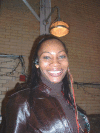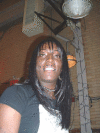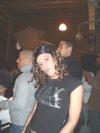Sex Workers, Fem Queens, and Cross-Dressers: Differential Marginalizations and HIV Vulnerabilities Among Three Ethnocultural Male-to-Female Transgender Communities in New York City
- PMID: 19079558
- PMCID: PMC2597809
- DOI: 10.1525/srsp.2007.4.4.36
Sex Workers, Fem Queens, and Cross-Dressers: Differential Marginalizations and HIV Vulnerabilities Among Three Ethnocultural Male-to-Female Transgender Communities in New York City
Abstract
This article describes 3 distinct ethnocultural male-to-female transgender communities in New York City: the low-income African American/Black and Latina(o) House Ball community; low-income, often undocumented immigrant Asian sex workers; and middle-class White cross-dressers. These communities are highly socially isolated from each other and are more connected to their ethnocultural contexts than to an abstract and shared transgender identity. Whereas previous research either has viewed male-to-female transgender people as one monolithic group or has separated them into abstract racial categories unconnected to their communities and lifestyles, this article positions them within specific social networks, cultures, neighborhoods, and lifestyles. With regard to HIV vulnerabilities, violence, and rape, House Ball community members seemed to engage in the riskiest form of survival sex work, whereas Asian sex workers seemed to engage in moderate-risk survival sex work. White cross-dressers seemed to engage in very low-risk recreational sex work.
Figures











Similar articles
-
Longitudinal cohort of HIV-negative transgender women of colour in New York City: protocol for the TURNNT ('Trying to Understand Relationships, Networks and Neighbourhoods among Transgender women of colour') study.BMJ Open. 2020 Apr 1;10(4):e032876. doi: 10.1136/bmjopen-2019-032876. BMJ Open. 2020. PMID: 32241785 Free PMC article.
-
Palliative care experiences of adult cancer patients from ethnocultural groups: a qualitative systematic review protocol.JBI Database System Rev Implement Rep. 2015 Jan;13(1):99-111. doi: 10.11124/jbisrir-2015-1809. JBI Database System Rev Implement Rep. 2015. PMID: 26447011
-
Risk behaviors and psychosocial stressors in the new york city house ball community: a comparison of men and transgender women who have sex with men.AIDS Behav. 2010 Apr;14(2):351-8. doi: 10.1007/s10461-009-9610-6. Epub 2009 Sep 10. AIDS Behav. 2010. PMID: 19763812
-
Towards 'reflexive epidemiology': Conflation of cisgender male and transgender women sex workers and implications for global understandings of HIV prevalence.Glob Public Health. 2016 Aug-Sep;11(7-8):849-65. doi: 10.1080/17441692.2016.1181193. Epub 2016 May 12. Glob Public Health. 2016. PMID: 27173599 Free PMC article. Review.
-
House/ball culture and adolescent African-American transgender persons and men who have sex with men: a synthesis of the literature.AIDS Care. 2011 Apr;23(4):515-20. doi: 10.1080/09540121.2010.516334. AIDS Care. 2011. PMID: 21271403 Review.
Cited by
-
Health Care Use and HIV-Related Behaviors of Black and Latina Transgender Women in 3 US Metropolitan Areas: Results From the Transgender HIV Behavioral Survey.J Acquir Immune Defic Syndr. 2017 Jul 1;75 Suppl 3(Suppl 3):S268-S275. doi: 10.1097/QAI.0000000000001402. J Acquir Immune Defic Syndr. 2017. PMID: 28604427 Free PMC article.
-
Adolescent gender-related abuse, androphilia, and HIV risk among transfeminine people of color in New York City.J Homosex. 2014;61(5):691-713. doi: 10.1080/00918369.2014.870439. J Homosex. 2014. PMID: 24294927 Free PMC article.
-
"Multiplicity, Race, and Resilience: Transgender and Non-Binary People Building Community".Sociol Inq. 2020 May;90(2):226-248. doi: 10.1111/soin.12341. Epub 2019 Nov 13. Sociol Inq. 2020. PMID: 38827570 Free PMC article.
-
Differential HIV risk for racial/ethnic minority trans*female youths and socioeconomic disparities in housing, residential stability, and education.Am J Public Health. 2015 Jul;105 Suppl 3(Suppl 3):e41-7. doi: 10.2105/AJPH.2014.302443. Epub 2015 Apr 23. Am J Public Health. 2015. PMID: 25905826 Free PMC article.
-
THE IMPACT OF CONSTRUCTION AND GENTRIFICATION ON AN OUTDOOR TRANS SEX WORK ENVIRONMENT: VIOLENCE, DISPLACEMENT AND POLICING.Sexualities. 2017 Dec;20(8):881-903. doi: 10.1177/1363460716676990. Epub 2017 Jan 10. Sexualities. 2017. PMID: 29379380 Free PMC article.
References
-
- Aggleton P, editor. Men who sell sex: International perspectives on male prostitution and HIV/AIDS. Temple University Press; Philadelphia: 1999.
-
- Aguirre A, Jr., Turner J. American ethnicity: The dynamics and consequences of discrimination. McGraw-Hill; New York: 1998.
-
- Amaro H. Love, sex, and power: Considering women's realities in HIV prevention. American Psychologist. 1995;50:437–447. - PubMed
-
- Amaro H, Raj A. On the margin: Power and women's HIV risk reduction strategies. Sex Roles. 2000;42:723–750.
-
- Amaro H, Raj A, Reed E. Women's sexual health: The need for feminist analyses in public health in the decade of behavior. Psychology of Women Quarterly. 2001;25:324–334.
Grants and funding
LinkOut - more resources
Full Text Sources
